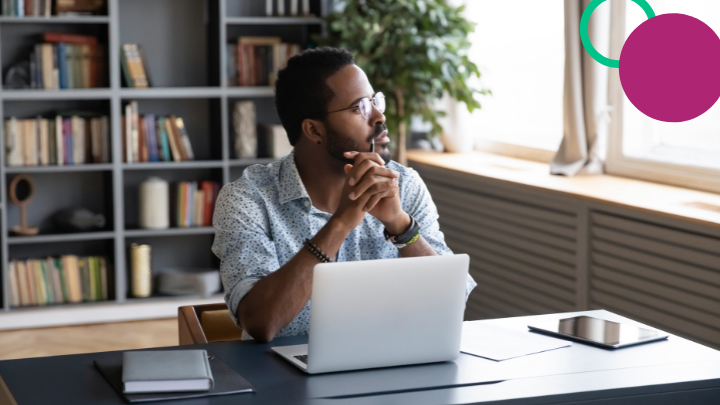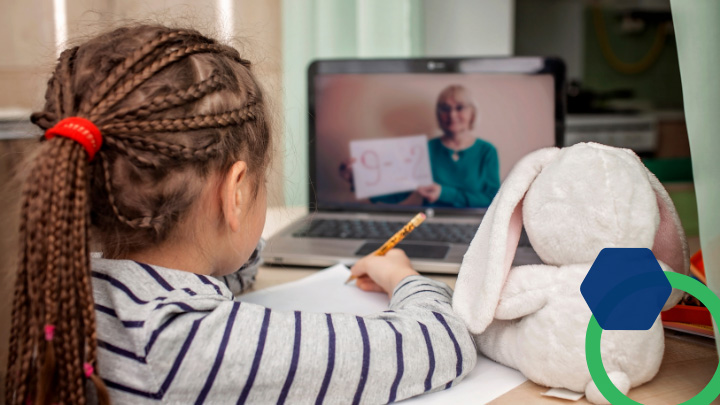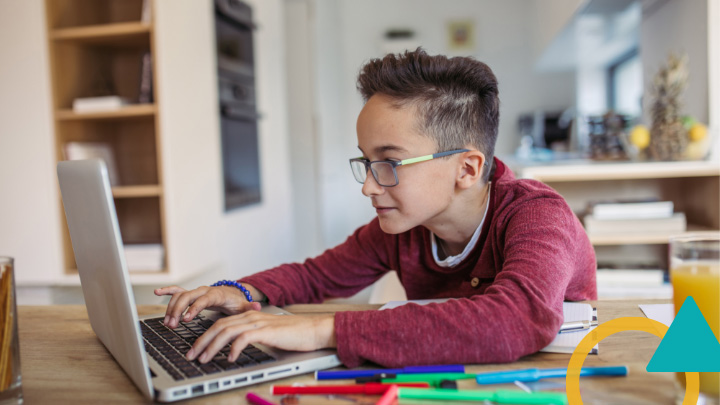As a BetterLesson instructional coach, I have facilitated virtual workshops with hundreds of teachers across all grade levels. One common question that I’ve heard is, “How can I keep my students engaged with teaching and learning online?”
Prior to the pandemic, our students were able to move around the classroom, collaborate in person, and engage with tech tools and classroom resources. Now, our reality has changed, but that does not mean that we cannot design engaging learning experiences. In fact, with a plethora of free resources, there are several avenues to foster student engagement during remote learning.
I’ve facilitated the BetterLesson virtual workshop, Meaningful Tasks: Designing Engaging Learning Experiences, in which teachers discover techniques and strategies that can amplify learning and engagement by creating authentic experiences and meaningful tasks. The workshop focuses on three major components: purpose, strategy, and modality.
Purpose: Allow students to understand why learning happens.
Have you ever encountered the question, “Why are we learning this?” While facilitating the Meaningful Tasks workshop, one teacher explained, “I have a student who continuously asks the question, why are we learning this? The student will ask the question before I have a chance to teach the content, and I struggle to answer the question, especially because I am teaching online.” There are many strategies that teachers can use to address this question, and it starts with identifying the purpose of the lesson.
The purpose is your learning target: it addresses why the learning happens, in student-friendly language. While creating meaningful tasks, it is essential for students to know what they are learning, why they are learning it, and connect it to previous academic content and learning experiences. At the end of the lesson, students should be able to self-assess and determine if they have mastered the content. While visiting a small group consultancy, one teacher explained the many benefits of defining the purpose and using student-friendly language in her lessons. She shared, “My students are able to measure their progress throughout the week, and they set weekly goals.” Allowing students to understand why learning happens can foster collective goal setting and authentic learning experiences. Throughout the virtual workshop Meaningful Tasks: Designing Engaging Learning Experiences, educators explore resources and strategies that can be used in the virtual classroom to help them identify and communicate the purpose of their learning tasks.
Strategy: Let’s create a student-centered learning environment.
While participating in a whole group discussion during the virtual workshop, a teacher shared his challenges related to creating a student-centered learning environment. He stated, “I have over 100 ninth graders this year in my history class. I don’t know where to start!” As a teacher, I’ve had this problem as well. Where do you begin when everything has changed?
When designing meaningful tasks and creating engaging learning experiences for your students, it is important to have a strategy for delivering information. Strategy is about how the learning happens and how to incorporate student-centered and engaging material within the lesson. This includes acknowledging students’ interests, academic abilities, zone of proximal development, and content knowledge. Then, teachers must consider the method they will use to deliver the student-centered instruction. An example may be assigning a group project and designating student roles within the group. There are several other strategies that help create a student-centered experience:
Acknowledge unique interests and academic abilities
This is essential to building a student-centered classroom. One way to acknowledge these interests and abilities is to give your students choice in their learning. Choice boards give your students autonomy while giving you time to assess and meet with students in small groups or in personalized sessions.
Include partner collaboration in remote learning environments
Build communication skills, accountability, and social-emotional skills. Partner collaboration can happen synchronously or asynchronously, and it can be used for partner work, peer tutoring, an accountability partner, and more. Students are able to learn from one another, offer feedback, and check in weekly.
Assign group work and incorporate student contracts
Use contracts to set expectations for your students to collaborate and contribute. Student contracts give your students a voice. They are able to identify appropriate behaviors, concerns, and goals for collaborating and completing assignments together.
Modality: Deciding when learning will happen.
The modality addresses when learning will happen (for example, switching between synchronous and asynchronous tasks) and the tech tools or student interactions that will support the learning. As teachers were transitioning into fully remote classrooms for the new school year, one teacher explained, “I feel like I’m starting over, it’s like I’m a first-year teacher all over again. I don’t know what to do with my students on synchronous and asynchronous days.”
Structuring your time in the virtual classroom is different from structuring your time in the physical classroom–yet it may not be as different as it seems. Even in traditional classrooms, teachers utilized synchronous and asynchronous tasks. An asynchronous task may be independent practice time whereas a synchronous task may be a whole group discussion.
Virtual classrooms generally have a mixture of synchronous and asynchronous learning experiences too. When creating meaningful tasks, teachers have to consider the purpose and strategy, to identify when the learning will happen – including if it will be synchronous or asynchronous. Thinking about the modality also means considering tech tools and student interactions. Tech tools support student-centered learning by providing timely feedback, increasing student ownership and autonomy, and providing 1:1 support for students. In the explore section of the virtual workshop, teachers have time to explore a large variety of tech tools that educators can use synchronously or asynchronously in their virtual classrooms.
Virtual learning is a shared reality for many teachers and students. The challenges of this method of instruction can feel overwhelming due to student absences, distractions, unfinished learning, and technical difficulties. In the virtual workshop, Meaningful Tasks: Designing Engaging Learning Experiences, educators practice considering the purpose, strategy, and modality of their instruction, to address these challenges. Even though changes in learning modality have impacted instructional practices, student-centered learning can still take place through meaningful, authentic, and engaging instructional practices.







